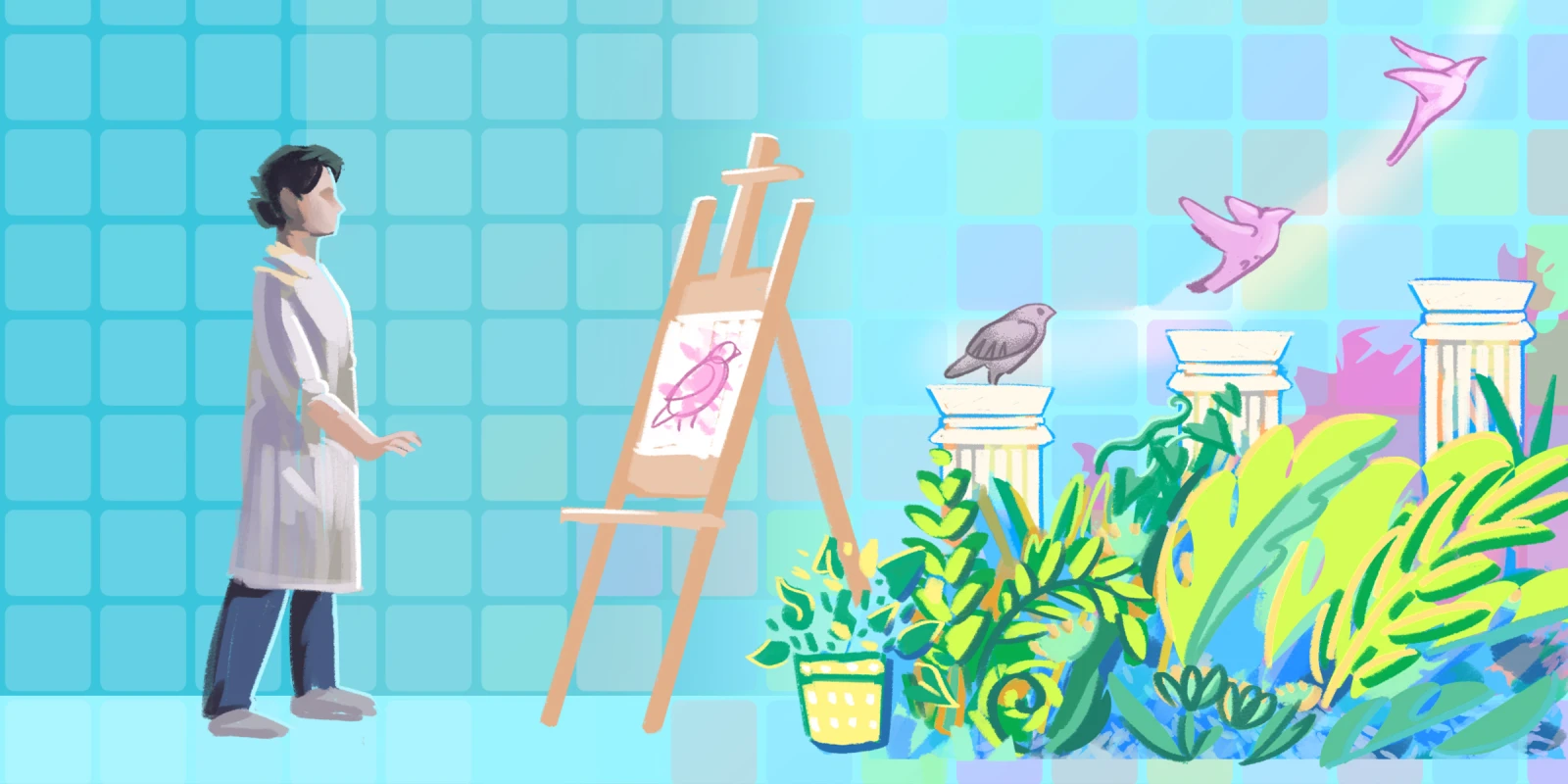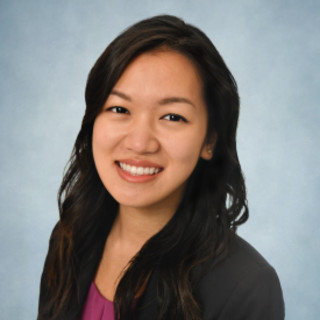If you dabble in visual art, poetry, or other humanities, send it to us here.
Swirling my brush around in the now-muddied water, I found myself unable to comprehend how my grandfather had effortlessly created life with merely a few shades. Seemingly out of nowhere, moss-covered trees and brightly colored birds sprung to life with a gesture of his hand. By contrast, my page was littered with enormous splotches of color, wobbly lines intersecting with varying shades of puke green.
Some of my favorite childhood memories include spending Saturday mornings with my grandparents. Before lunch, my grandfather would sit me in front of a window and ask me to paint what I observed outside in the garden. He would then call my grandmother over, who had the not-so-fun challenge of trying to interpret my paintings (which were closer to modern art than reality). My grandfather was a famous traditional Chinese watercolor painter, and I cherished those weekends when he trained me how to observe, analyze, and communicate what I saw. When he developed Alzheimer’s disease years later, he still continued to produce paintings of his beloved chrysanthemums, giving away most of his work to be enjoyed by others.
One of the most fundamental skills that we are taught in medical school is the power of observation. Medical students are trained to systematically analyze and assess the patient in front of them in order to arrive at the most likely diagnosis. In the emergent setting, even before the actual physical exam, a determination of “sick” versus “not sick” is usually the first diagnostic question. While taking a history, students are taught to carefully listen for keywords, which can raise or lower the probabilities of certain pathologies. Sometimes, patients are not even aware that they are being observed (surreptitiously using Murphy’s sign to assess gallbladder disease is a clear example). Although my initial differential diagnoses are not always correct, much of my assessment and subsequent plans are derived from analyzing what I directly hear and observe.
Like medicine, art hinges on observation, relying on an open channel of communication from artist to audience. Several medical schools have recognized the relevance of art to medicine, offering courses in local art museums wherein students are asked to sit silently and interpret details in a painting, from composition and color palette to subject matter and style. Though I admittedly sometimes use the “drive-by” approach when viewing art (“oh, wow, I really like that”), an education setting encourages students to delve deeper into the artist’s intentions and underlying message. But, as much as I enjoy sharpening my observational skills at art galleries and in clinics, I have always wondered if the practice of art might be more fully incorporated into medicine. That is, how can the practice of traditional art (e.g., drawing, sketching, painting) be applied to my career as a physician?
In a concrete, analytical world where objective values often dominate patient care (Hgb < 7 indicates anemia), it can be difficult at first to conceptualize a role for traditional art. At second glance, however, an understanding of traditional art affords several advantages to the practicing physician. Quite literally, the profession of medical illustration allows for accurate anatomical representations of the human body. More abstractly, learning the artistic principles of harmony, balance, and judgment of proportions, as well as creative problem-solving, is inherently advantageous, especially in certain fields of medicine. Indeed, art may not only be helpful for clinicians; among patients, art therapy is also effective in reducing symptoms of depression, anxiety, and trauma, while also improving mood. And, for patients and clinicians alike, traditional art may confer another hidden benefit: the power to improve communication.
Basic communication skills, along with understanding a patient’s desires, feelings, and treatment goals, are essential to a successful doctor-patient relationship. Effective decision-making requires an accurate delivery of often complex medical information, including risks, benefits, and alternatives. However, physicians often overestimate their communication abilities, and patients consistently report wanting better communication. One strategy to bridge this divide is the use of visual aids. As the saying goes, “a picture is worth a thousand words,” and information supplemented with well-defined drawings and diagrams can simplify difficult medical concepts and reinforce patient understanding.
Although visual aids can be enormously helpful, focused curriculum on visual communication is lacking in most medical schools. As a result, a hands-on, interactive course called “Drawing for Visual Communication in Medicine” was developed by two medical students to fill the gap. I recently had the opportunity to enroll in the course, which was held virtually over four weeks. I learned how to approach the proportions of the adult/pediatric face and body, utilize shading and contour lines to my advantage, and apply this knowledge to practice. Though data are still preliminary, Elizabeth (Lizz) Card, a fourth-year student and one of the course instructors, reported promising applications of the course. Compared to a control group, besides noting an improvement in drawing ability, students’ responses to a visual communication prompt were more clearly defined, accurate, and representative. In a follow-up survey (unpublished), nearly one-third of the people who took the class were using these skills regularly in clinical practice.
While my grandfather’s quiet, methodical approach to drawing may not be suitable for the fast-paced nature of the hospital, his underlying philosophy on using art as a communication device is similar. Though I no longer paint wobbly trees and lopsided birds, I aspire to use drawing in my career to improve patients’ understanding of medical concepts, and help them with decision-making. And, in addition, I hope to continue my grandfather’s legacy.
How have the humanities — or other fields outside the life sciences — improved your relationships with patients? Tell us in the comments section.
Originally from Chicago, Beatrice is currently a fourth-year medical student at the University of Pennsylvania Perelman School of Medicine interested in applying into otolaryngology. As an avid painter and artist, she is interested in the intersection of art and medicine, particularly within the context of improving surgical care and patient education. Outside of medicine, she enjoys cooking, drawing, powerlifting, and trying new restaurants in Philly. Beatrice is a 2020–2021 Doximity Op-Med Fellow.
Illustration by April Brust







